
FOR AN IMPROVED RECIPE, check out our most recent pierogi post.
In a way this vegan pierogi recipe is a little surprising, as there was a time in my life when I could no longer look at dumplings anymore. When I was a kid, my gran cooked us lunch most days and “pierogis” were often on the menu. I mean, don’t get me wrong, she was the one and only dumpling queen and I’ve never had “pierogis” that were as good since, but I simply got “pierogied” out.
During this year’s freezing Christmas in Poland, I got strangely nostalgic about this simple dish and came back home to make stacks of pierogis for days, especially with the weather being so vile (apparently the worst Greek winter in 7 years). As we were stuck in the house while massive storms thundered by; I found making Polish dumplings quite therapeutic.
Unfortunately, I also happen to live with an obsessive runner with an insatiable appetite who redefines the notion of a portion size. What this means is that what would normally keep most people fed for a few days, is one meagre meal in my house. A standard portion in Poland is about 10 dumplings per person and I have seen 40 disappearing down Duncan’s throat, followed by him looking into all the pots and pans in search for more. Look, I know he doesn’t look like a big eater, but he does go through food like a ravenous army of locusts.
“Ruskie” is the most popular type of pierogi in Poland. Typically, the filling uses a mixture of potatoes, fried onions and white cheese that is similar to feta in texture, but much less salty. I substituted it here with firm tofu seasoned with soy sauce and some lemon juice and it worked a treat.
Duncan, my most devoted recipe tester, who has had the non-vegan version during his countless visits to Poland, has hailed me a genius for making vegan pierogi taste just like the traditional ones so do give them a try, even if you aren’t vegan.
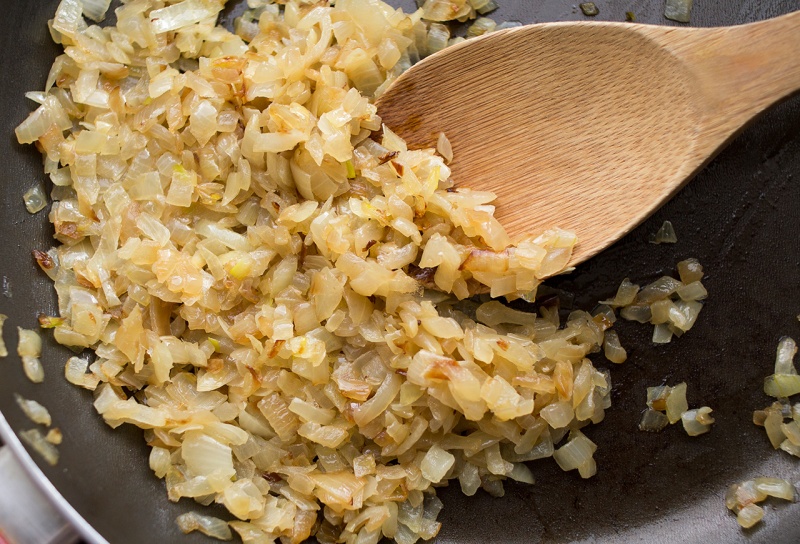
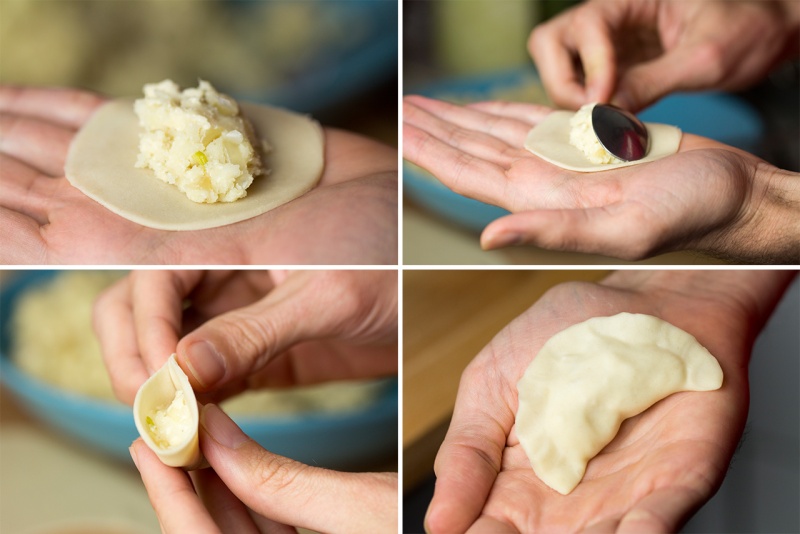
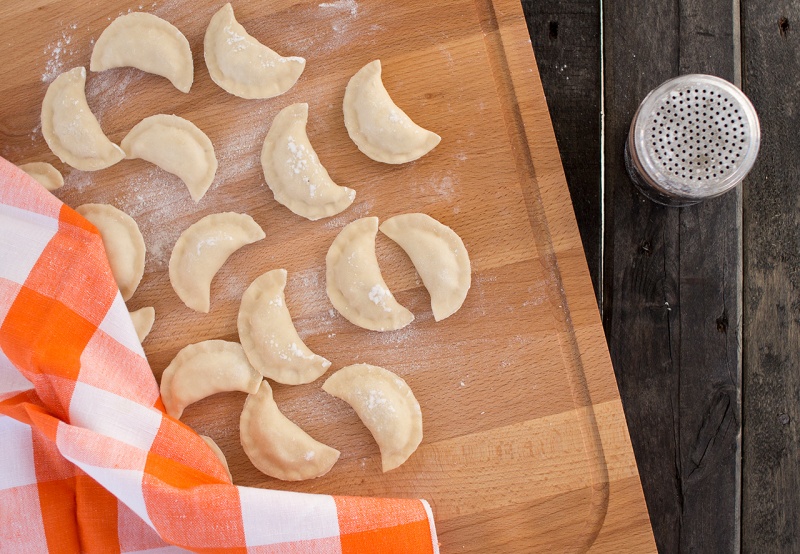
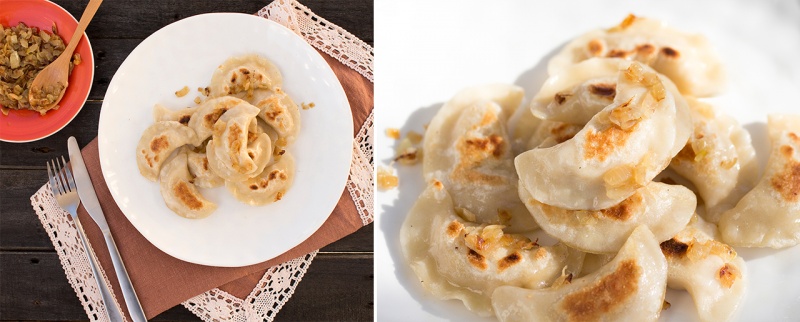
FILLING
- 650 g potatoes
- 200 g firm tofu
- juice of ½-1 lemon
- 2 tsp soy sauce
- ½ cup sauteed white onion (1½ small onions)
- generous amount of freshly ground pepper
- 1 level tsp sea salt
DOUGH
- 3 cups flour
- 1 cup hot water + a few tbsp extra
- 1 level tsp sea salt
- 1½ tbsp olive oil
EXTRAS
- extra sauteed onion, to serve
- olive oil, for frying
- (FILLING) Heat up olive oil in a pan. Fry onion until translucent. You need onions for the dough and some for the topping so I would suggest frying 3 small, finely diced onion until lightly caramelised.
- Boil the potatoes in their skins with no salt. Make sure they are the same size, if not cut the big ones in half. Once the potatoes have been boiled put them through a potato ricer. Leave to cool.
- Open tofu, drain water off. Wrap the tofu block in a clean piece of a kitchen towel and place it on a rack with a plate underneath and something heavy (like a jam jar) on top. The point is to extract all excess moisture as you don’t want the filling to be too wet.
- Mash tofu up with a fork, season with 2 tsp of soy sauce and the juice of ½ lemon to give it a subtle tang.
- In a bowl, combine mashed potatoes, tofu and ½ cup of sauteed onions. Season with salt and pepper. Leave aside.
- (DOUGH) In a mixing bowl, combine flour and salt. Add 1 cup of hot water and 1½ tbsp of oil. Once combined roughly with a wooden spoon, start combining the dough with your hands. It will need a bit more water but it is very important to add the water in gradually (tablespoon by tablespoon) until you achieve the correct consistency dough. Knead it for a few minutes with your hands and then set aside for 30 minutes under a clean kitchen towel or pierced (so that it can breathe) cling film so that the dough doesn’t dry up.
- Once the dough has had a chance to rest, divide it into smaller parts (I would go with 6 portions with this much dough) and roll it out with a rolling pin on a lightly floured surface. You want it to be about 1-2 mm thin; the thinner the dough, the tastier the dumplings. With an upside down glass, cut out circles in the dough. Place a heaped teaspoon of the filling in the centre of each circle, fold the circle in half and press the edges of the semi-circle together with your fingers. Go over each dumpling twice to make sure everything is sealed completely. Put the finished dumplings on a lightly floured surface and cover them with a kitchen towel while making the rest so that they don’t dry out.
- Bring a pot of water to boil, throw in 10 dumplings at a time and from the moment the water comes to the boil again count for 3-4 minutes (depending on how thick your dough is). Once the time is up, fish them out with a slotted spoon and place on a clean plate. Put a new batch in until you have cooked them all.
- Heat up a little olive oil in a pan and place the cooled-down dumplings in the pan. Turn them after they’ve browned on one side. Make sure you don’t overcrowd the pan.
- Whilst you are frying your dumplings, warm up the rest of your sauteed onion, season it with salt and pepper and serve with your dumplings.

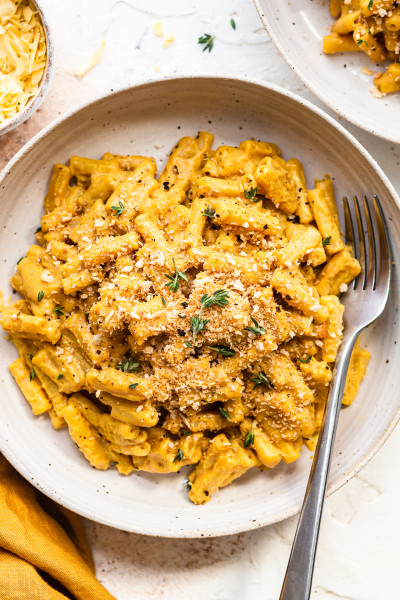

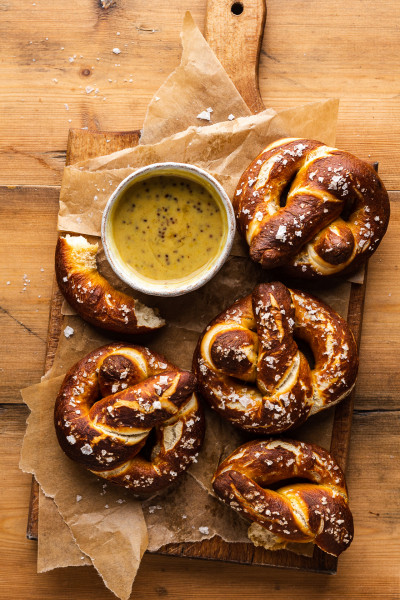
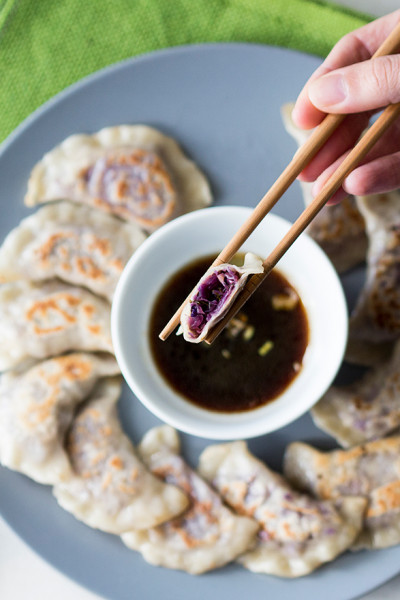
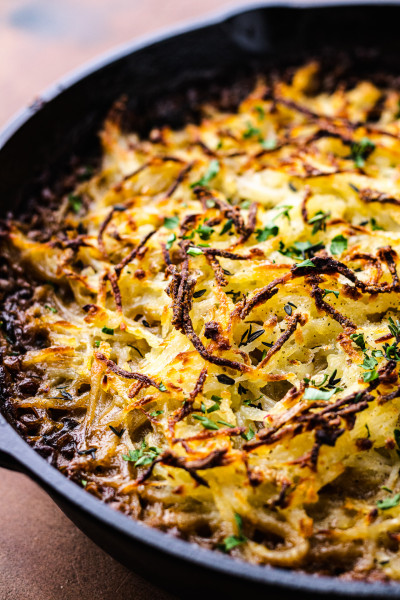
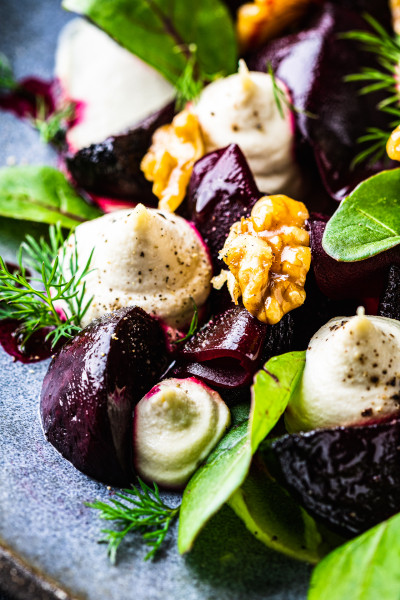
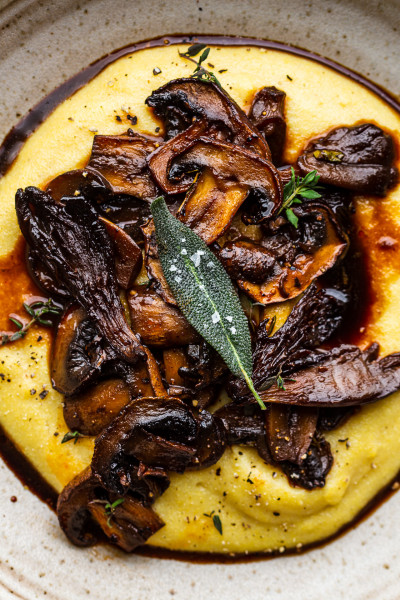
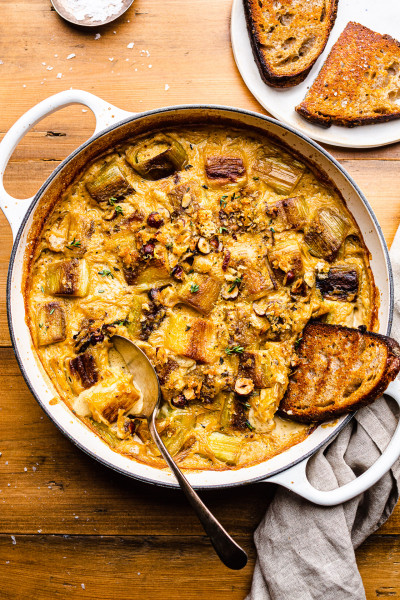
It's 125 g of flour per cup so in this case it will be about 375 g of flour, but this is a really old recipe of mine - you may want to try this updated version or other fillings: cabbage and mushrooms or spinach and cheese. Ania
I used the dough recipe from the old recipe on your blog (without aquafaba).
I also bought some vegan cream cheese (Simply-V) instead of making my own.
Positively surprised with the coconut bacon - it does not taste like meat but is very tasty and crispy.
Pozdrawiam
PS: you may also enjoy my take of cabbage and mushroom and ricotta and spinach pierogi
thanks,
Ewa
No, I haven't tried freezing them raw, I'm afraid. Sorry! Ania